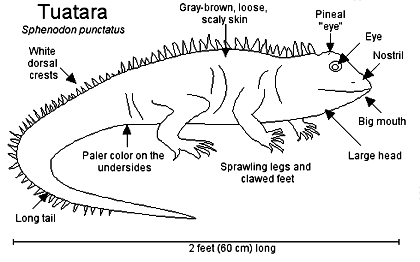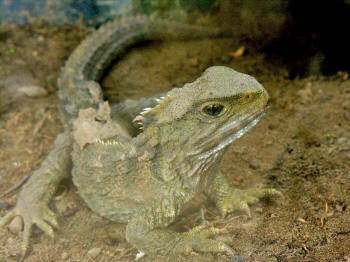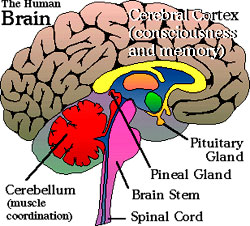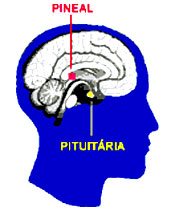|

by Richard Alan Miller
1992
Update 07/07/2003
from
NewPhysics Website
Spanish version
From the time of Dionysius to the time
of Plato, the cultures of the Mediterranean consented to the
doctrine that claimed the existence of an order of ultimate reality
which lies beyond apparent reality.
This "paranormal" reality was
accessible to the consciousness only when the "normal" routines of
mental data processing were dislocated. It was Plato's pupil
Aristotle who changed his teacher's game, separating physics from
metaphysics. The philosophical temper of our present civilization,
being scientifically and technically oriented, is basically
Aristotelian.
No such rational figure as Aristotle arose in the Orient to a
position of equal eminence. Because of this and other reasons,
Indian anatomists and zoologists, who where no doubt just as curious
as the Greeks about the origins of life, and as skilled in
dissection, did not feel compelled to set their disciplines up in
opposition to metaphysics. Physical and metaphysical philosophy
remained joined like Siamese twins.
As a result, the discipline
which became medicine in the West evolved into a system known as
Kundalini Yoga in the Hindu culture.
In Western terms, Kundalini Yoga can be best understood as a
biological statement contained within the language of the poetic
metaphor. The system makes the attempt of joining the seeming
disparate entities of body and mind.
It is a very complicated
doctrine; in oversimplified terms, the system encourages the
practitioner to progress through the control of a number of stages,
called Chakras or mind-body coordination. A sixth, associated with
clairvoyance and telepathy, is called the Ajna.
The physiological site of this sixth Chakra, the Ajna, is located in
the center of the forehead. It is symbolized by an eye - the
so-called third eye, the inner eye, or the eye of the mind. When
this eye is opened, a new and completely different dimension of
reality is revealed to the practitioner of yoga. Western scholars
when they first encountered this literature, took the third eye to
be an appropriately poetic metaphor and nothing else.
It was not until the middle of the nineteenth century, as the
subcontinent of Australia and its surrounding territory came to be
explored, that a flurry of interest centered upon a lizard native to
the area,
the tuatara (Sphenodon punctatum).
 
This animal possessed,
in addition to two perfectly ordinary eyes located on either side of
its head, a third eye buried in the skull which was revealed through
an aperture in the bone, covered by a transparent membrane, and
surrounded by a rosette of scales.
It was unmistakably a third eye
but upon dissection it proved to be non-functional.
Though this eye still possessed the structure of a lens and a
retina, these were found to be no longer in good working order: also
lacking were the appropriate neural connections to the brain. The
presence of this eye in the tuatara still posses a puzzle to
present-day evolutionists, for almost all vertebrates possess a
homologous structure in the center of their skull.
It is present in
many fish, all reptiles, birds, and mammals (including man). This
structure is known in literature today as the pineal gland.
The gland is shaped like a tine pine cone situated deep in the
middle of the brain between the two hemispheres. Studies then began
to determine whether this organ was a true functioning gland or
merely a vestigial sight organ, a relic from our reptilian past.
In
1959 Dr. Aaron Lerner and his associates at Yale University found
that melatonin (1), a
hormone manufactured by the pineal gland, was created through the
action of certain enzymes on a precursor chemical which must
pre-exist in the pineal in order for it to be transformed into
melatonin. This precursor chemical turned out to be serotonin
(2).
It was E.J. Gaddum, a professor of pharmacology at the
University of Edinburgh, who was the first to note a connection
between serotonin and mental states of being. In a paper published
in 1953, he pointed out the fact that LSD-25 was a potent antagonist
to serotonin. Serotonin is not an unusual chemical in nature; it is
found in many places - some of them odd, like the salivary glands of
octopuses, others ordinary; it abounds in plants such as bananas,
figs, and plums.
What then is its function in the human brain?
The task of exploring the role played by melatonin, and its
precursor serotonin, was undertaken by a biochemist, Julius
Axelrod. He found that melatonin suppressed physiological
sexuality in mammals. If test animals were stimulated to manufacture
excessive amounts of melatonin, their gonads and ovaries tended to
become reduced in size, to shrink, to atrophy.
The estrous or
fertility cycle in females could likewise be altered experimentally
by doses of melatonin.
Now two most curious functions had been attributed to the pineal
gland, the third eye of the mind:
-
It has now been established that
this organ produced a chemical which had, indirectly at
least, been associated with psychedelic states
-
It also produced a chemical
which suppressed functional sexuality
The literature of religious mysticism in
all ages and all societies has viewed the mystical passion of
ecstasy as being somehow antagonistic to, or in competition with,
carnal passion.
Axelrod and his co-workers also discovered another incredible fact:
the pineal gland produces its chemical according to a regular
oscillating beat, the basis of this beat being the so-called
circadian rhythm. They found that the pineal responded somehow to
light conditions, that by altering light conditions they could
extend, contract, or even stabilize the chemical production rhythms
of the pineal.
The fact that the pineal responds to light, even if this response is
indirect via the central nervous system, has some fascinating and
far-reaching conceptual applications. There are many behavioral
changes which overtake animals as the seasons change, and which can
be produced out of season in the laboratory by simulating the
appropriate span of artificial daylight.
Do such seasonal changes in
mood and behavior persist in humans?
The great religious holy days of all faiths tend to cluster around
the times of the solstices and equinoxes. Is it possible that the
human pineal gland responds to these alterations in length of
daylight? Changing the balance of neuro-humors in the brain may
perhaps effect a greater incidence of psychedelic states in certain
susceptible individuals just at these crucial times. This
possibility provides an entirely new potential dimension to our
secular understanding of the religious experience.
The pineal gland has thus been referred to as a kind of biological
clock, one which acts as a kind of coupling system; perhaps
maintaining phase relations within a multi-oscillator system; a
phase coordinator for multiple bio-rhythms.
The pineal is a "cosmic
eye;" it is aware of celestial rhythm. It "tunes" our biochemistry
to those subtle rhythms not observed by the normal eye, like
seasonal and lunar changes rather than daily ones. Serotonin can be
seen as the "intensity knob" of the brain. As the level of
serotonin
increases, so does the level of activation of the cortex.
Strong suspicion has fallen now on serotonin as being one of the
principle agents of the psychedelic experience. Studies now reveal
that LSD-25 strikes like a chemical guerrilla, entering into
receptor granules in the brain cells swiftly, and then leaving after
a very short time, perhaps ten to twenty minutes (in animals).
When
the bulk of LSD-25 has left the receptor granules, it is replaced by
what seems to be excessive, or super-normal amounts of serotonin.
The LSD-25 creates what is called a "bouncing effect," like a spring
pushed too tight. When the LSD-25 leaves the system, the serotonin
springs back and overcompensates.
For most of us, most of the time, our world is a Darwinian
environment. We must manipulate ourselves within it, or attempt to
manipulate it in order to survive. These survival needs tend to
color our appreciation of this world, and we are continually making
judgments about it. Some of these judgments are based on prior
personal experience, others are provide by the culture. This
"recognition system" is one of the elements disrupted by the
psychedelic state.
The principle question concerning psychedelic states remains: How
much disruption can the system tolerate?
The problem of how to
maintain a certain madness while at the same time functioning at
peak efficiency has now captured the attention of many
psychiatrists. There seems to be a point at which Edgar Allen Poe's
"creative madness" becomes degenerative, impeding function rather
than stimulating it.
In light of this analysis,
a shaman can be seen to be uncoupling his
internal bio-sensor from the universal inputs. He gets "drift" where
he is rushed toward new signal-to-noise ratios. The particular
rituals are set up to disconnect the shaman from his social and
cosmic environment. This is done through the ritual use of
hallucinogens; they de-synchronize his internal rhythms.
This
de-synchronization produces more noise in his awareness. It also
expands that awareness. The rituals are so designed as to contain
elements which focus or tune that "noise" and direct the expanded
awareness.
Man is unique by virtue of being possessed by intuitions concerning
the scope of the mysterious universe he inhabits. He has devised for
himself all manner of instruments to prove the nature of this
universe. The beginnings of scientific understanding of shamanistic
ritual and the function of the third eye provide man with powerful
new techniques for exploration.
This will allow him to penetrate the
vast interior spaces where the history of millions of years of
memories lies entangled among the roots of the primordial self.
References
(1) The chemical substance melanin
is the pigment which darkens skin color. It is located in
specialized cells scattered through the topmost layer of skin.
Melatonin was found to be the substance responsible for causing
the contraction of melanin-producing cells.
(2) Serotonin is of the same chemical series of indole alkaloids
which include psychedelic drugs such as LSD-25, psilocybin, D.M.T. and bufotenine. The hormone
serotonin is also known as
5-hydroxtryptamine.
ADDENDUM
06-01-92
This paper was originally
written in 1975 for several scientific publications, and was
reprinted IN THE CONTINUUM (Vol.II, No.3) in 1978. At that time,
I made a very important discovery which was added to THE
HOLISTIC QABALAH series. I thought to share that discovery at
this time, to complete my thoughts on this subject:
In 1979 I was in a very serious accident, where I was crushed
between a brick wall and an out-of-control automobile. My left
knee was crushed, the parenteal nerve was severed at the knee. I
was going to lose my leg! I postponed surgery, did some specific
rituals with Kundalini and my "third eye," and now have complete
regeneration of nerve tissue - something now believed by
mainstream medicine as physically impossible.
Here is how I did it:
There is a "chill" which runs up
(Gopi Krishna) or down (Sri Aurobindo) the spine at certain
times of the week. You can, in some situations, actually
induce this event. Sometimes, you can make our whole body
shake. This is the physical aspect of Kundalini. On a
physical plane, there are a series of small nerve fillia
that stick out from the spine - almost like a "ladder."
The "chill" is an EM-wave that is traveling up (or down) the
spine, as each nerve fillia begins to oscillate. The most
interesting fact about this is that the EM-field frequency
in the visible light region! This is what most religions
refer to as "The Light." And what is at the very top end of
this wave-train of light? The pineal gland!


Now, if you stimulate the pineal gland on a regular basis -
let's do it 3 times each day, what happens next is
wonderful.
The pineal gland is "light sensitive," its
primary function now understood to regulate the body for
seasonal changes (health). This so stimulates the pineal
gland that it sends out a signal down the neural cavity. The
neural cavity, of course, connects the pineal gland at one
end with the thalamus at the other....
What happens is that a resonant cavity oscillator is set up
in the neural cavity, causing it to modify
the glial cell it
normally manufactures. If there are enough trace minerals in
your diet, this stimulated neural cavity will actually
create true nerve cells, rather than those associated with
sheath (glial). If you take a trace mineral supplement and
do this exercise, you can regenerate nerve tissue!
The actual process took some 5 months of daily meditation,
as the actual consistency of nerve tissue is somewhat like
that of Vitamin E - very viscous and slow to travel down my
central nervous system to my knee. I no longer have nerve
loss of any kind. This was documented by Clinic 7 (Pain
Clinic) at the University of Washington in 1980. I now walk
normally, although I still have some structural problems.
This is but one application of the
principles outlined in this paper. Serotonin can also be
considered a "Gate" for accessing other dimensions not
accessible to "normal" consciousness.
|





